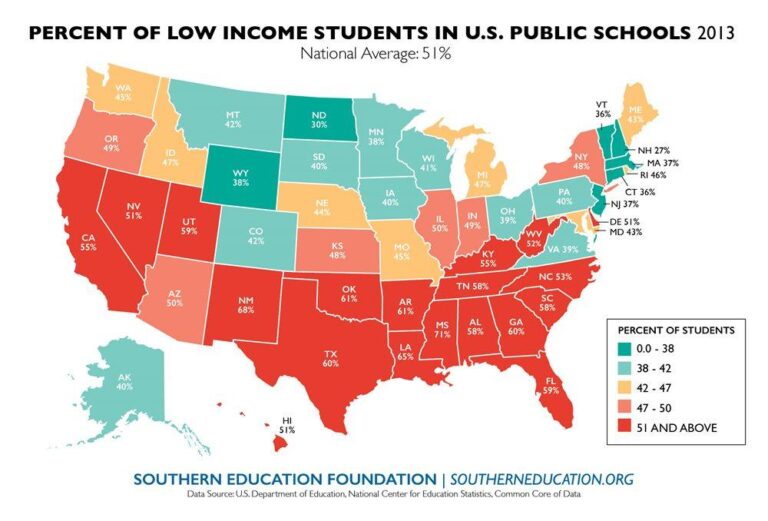Economic Hardship Escalation in Greater Houston School Districts
Over the last half-decade, families throughout the Greater Houston area have faced mounting financial difficulties, leading to a significant surge in the proportion of students classified as economically disadvantaged within numerous school districts. This upward trajectory highlights an urgent demand for specialized educational programs and resources designed to bridge the widening disparities in student access to opportunities and support. A primary indicator of this trend is the consistent increase in students eligible for free or reduced-price meal programs, reflecting broader economic stressors.
Several districts have witnessed pronounced increases, influenced by factors such as job market volatility, rising housing costs, and shifting population demographics. In response, many districts are actively pursuing grant opportunities and forging partnerships with community organizations to alleviate these pressures. The table below illustrates projected changes in economic disadvantage rates from 2020 through 2025 for select Greater Houston districts:
| District | 2020 (%) | 2025 Projection (%) | Percentage Growth |
|---|---|---|---|
| Spring ISD | 55 | 65 | +10% |
| Conroe ISD | 42 | 50 | +8% |
| Fort Bend ISD | 33 | 40 | +7% |
| Houston ISD | 77 | 83 | +6% |
- Expanded student assistance: Districts are broadening meal programs and after-school care offerings.
- Collaborative community initiatives: Local nonprofits and government agencies are joining forces to enhance support.
- Policy-driven resource allocation: Data guides targeted funding to districts with the highest needs.
Effects on Educational Resources and Student Achievement
The rising share of economically disadvantaged students in Greater Houston’s school districts is placing considerable strain on educational resources and services. Schools are experiencing heightened demand for essential programs such as subsidized meals, mental health counseling, and academic support including tutoring and extended learning opportunities. This demographic shift compels districts to reallocate budgets strategically to ensure equitable access to these critical services, which are vital for student success.
Academic outcomes present a complex scenario. While some districts report a widening achievement gap linked to economic hardship, others have demonstrated progress by deploying focused interventions. These include:
- Provision of digital learning devices and internet access to reduce technology disparities at home.
- Augmentation of social work and counseling staff to support students’ emotional well-being.
- Engagement with community groups to offer mentorship and enrichment activities.
| District | 2020 Economic Disadvantage (%) | 2025 Projected (%) | Change in Reading Proficiency (%) |
|---|---|---|---|
| Alief ISD | 62 | 70 | -3 |
| Katy ISD | 38 | 43 | +1 |
| Spring Branch ISD | 50 | 57 | -2 |
| Houston ISD | 80 | 85 | -5 |
District and Community Initiatives Addressing Economic Challenges
In response to the growing number of students facing economic hardship, Greater Houston school districts have swiftly implemented comprehensive programs targeting both academic and socio-emotional needs. These include scaling up free and reduced-price meal offerings, extending after-school tutoring, and enhancing access to mental health resources. District leaders emphasize the importance of partnerships with local nonprofits and businesses to supplement school efforts and build robust support networks for students and their families.
Beyond direct educational services, community-driven efforts have been instrumental in closing gaps caused by economic disparities. Several districts have launched outreach campaigns to boost enrollment in assistance programs and provide families with critical information on housing, healthcare, and employment opportunities. The following table outlines notable initiatives and community collaborators in select districts:
| District | Key Programs | Community Partners |
|---|---|---|
| Spring ISD |
|
Houston Food Bank, Public Library System |
| Katy ISD |
|
Parenting Resource Center, Mental Wellness Coalition |
| Alief ISD |
|
Tech Access Initiative, Neighborhood Support Services |
Strategic Policy Approaches to Support Economically Disadvantaged Students
Addressing the rising population of economically disadvantaged students in Greater Houston requires deliberate policy measures that ensure fair access to vital resources and support systems. Priorities include increasing funding for nutrition programs, expanding after-school academic enrichment, and bolstering mental health services tailored to the unique challenges faced by low-income learners. These efforts are essential to counteract the academic and social hurdles linked to economic hardship.
Furthermore, fostering collaboration among schools, municipal agencies, and community organizations is critical to developing integrated support frameworks. Utilizing data-driven approaches allows districts to identify vulnerable students early and allocate resources more effectively. The table below summarizes recommended policy actions and their anticipated benefits:
- Boost financial support: Enhance state and local funding streams for nutrition, counseling, and academic programs.
- Improve technology access: Guarantee universal availability of devices and internet connectivity for remote and hybrid learning.
- Engage families: Create outreach programs that equip parents with tools and knowledge to support their children’s education.
- Educator training: Provide professional development focused on recognizing and addressing the needs of economically disadvantaged students.
| Policy Area | Expected Outcome | Illustrative Program |
|---|---|---|
| Nutrition Assistance | Enhanced focus and attendance rates | Breakfast in the Classroom Initiative |
| Technology Equity | Leveling the educational playing field | Districtwide Device Lending Program |
| Mental Health Support | Lower absenteeism and improved resilience | School-Community Counseling Collaborations |
| Parental Involvement | Stronger home-school partnerships | Family Engagement and Education Workshops |
Conclusion
As Greater Houston’s school districts confront a steady increase in economically disadvantaged students from 2020 through 2025, educators and policymakers are challenged to respond with effective strategies that address the multifaceted needs of this growing demographic. Data-driven insights emphasize the importance of targeted resources and collaborative support systems to promote equity and opportunity for all learners. Ongoing evaluation and partnership among schools, communities, and government entities will be essential to crafting responsive educational frameworks that meet the evolving demands of the region’s diverse student body.




